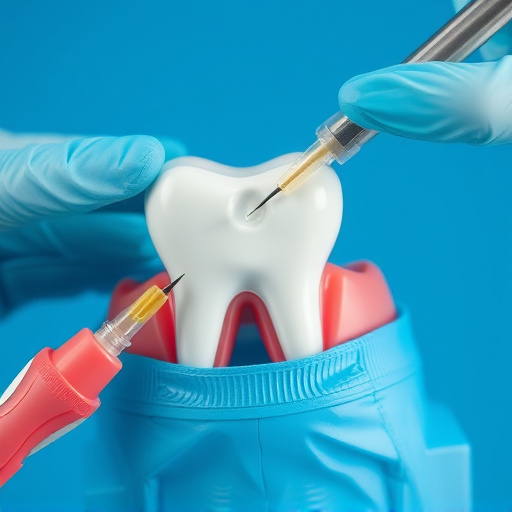Third-party dental financing services offer flexible payment plans for diverse treatments, low-interest rates, and same-day approvals, enhancing access to quality care. Patients should weigh advantages like affordability against potential drawbacks like hidden fees and restrictive policies. Understanding specific dental needs and researching available options helps select suitable financing plans for essential treatments, from routine checkups to extensive restorative procedures.
Financing dental treatment can be a complex task, but third-party services offer a viable solution. This article explores how these financial options can make high-quality oral care more accessible. We delve into the advantages and potential drawbacks of using third-party dental financing, providing insights into the process and what to expect. By understanding these alternatives, patients can navigate their dental treatments with greater ease and confidence.
- Understanding Third-Party Dental Financing Options
- Benefits and Drawbacks of Using These Services
- Navigating the Process: What to Expect
Understanding Third-Party Dental Financing Options

Third-party dental financing services have become increasingly popular as a solution for individuals seeking to access quality dental care but facing financial constraints. These options offer a range of plans and packages tailored to different needs, from preventive dentistry such as regular check-ups and cleanings, to more extensive restorative treatments like fillings, crowns, or even orthodontics. By partnering with insurance providers, healthcare financing companies, or dental practices themselves, these services provide patients with flexible payment plans that can make advanced dental procedures more affordable.
Understanding the available financing options is crucial when considering any dental treatment. Patients should explore various third-party services to find those that align best with their budget and treatment requirements. Whether it’s for a routine dental cleaning or a complex restorative procedure, these financing schemes often involve low-interest rates, zero-down payment plans, or even same-day approval, making it easier for individuals to access the dental care they need without the financial burden.
Benefits and Drawbacks of Using These Services

Using third-party services for financing dental treatment comes with several advantages. These platforms often offer flexible payment plans and low-interest rates, making high-quality comprehensive dental care more accessible, especially for those who might otherwise delay or forego necessary treatments. They also streamline the process by connecting patients directly to a network of dental providers, simplifying the initial consultation and treatment steps. This convenience can be particularly beneficial for adults and children’s dentistry, ensuring regular checkups and prompt addressing of issues without financial barriers.
However, there are potential drawbacks. Privacy concerns come to the forefront, as these services require sharing sensitive financial information. Additionally, while third-party financing may offer immediate solutions, it’s important to understand the terms and conditions thoroughly. Some services might have hidden fees or restrictive repayment policies. Moreover, not all procedures, including specialized treatments like dental bonding, are covered by these plans, requiring out-of-pocket expenses that could be a financial burden for some. Therefore, it’s crucial to weigh the benefits against potential drawbacks before deciding on such financing options for your comprehensive dental care needs.
Navigating the Process: What to Expect

Navigating the process of financing dental treatment through third-party services can seem daunting at first, but with a clear understanding of what to expect, patients can make informed decisions and choose the best option for their needs. It starts with evaluating your specific situation, including assessing your dental issues and determining if it’s routine care or an emergency, such as needing immediate tooth repair. This step is crucial as different financing plans cater to various types of treatments, from preventative care to extensive restorative dentistry.
Next, research various third-party providers and understand the available financing options. Many offer flexible payment plans, interest-free periods, or promotional rates, especially for emergency dental care situations. Patients should carefully review the terms and conditions, including interest rates, repayment terms, and any additional fees. By doing so, they can select a plan that aligns with their budget and ensures access to much-needed treatments without financial strain, facilitating timely intervention for issues ranging from tooth repair to broader restorative dentistry needs.
Financing dental treatment through third-party services offers a viable alternative to traditional payment methods, providing patients with flexible options and improved access to care. By understanding the various financing options, weighing the benefits and drawbacks, and navigating the process effectively, individuals can secure the necessary funds for their dental needs without breaking the bank. With careful consideration, third-party dental financing can be a game-changer in managing oral health expenses.














